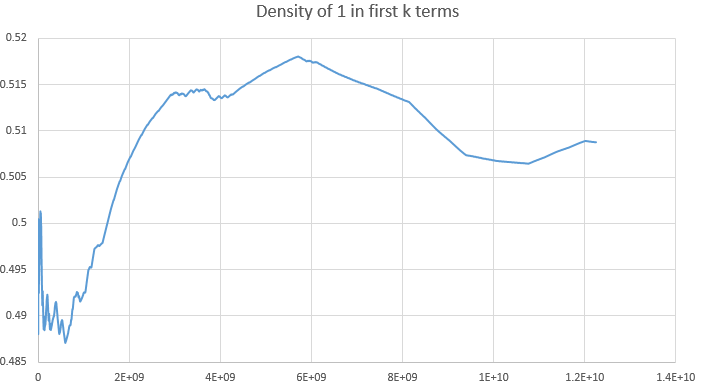If we let $\operatorname{Kol}(a_1,\dots,a_n)$ be the run sequence determined by the rules of Kolakoski Frequencies, we ask is there a sequence of $\operatorname{Kol}$ that DOES NOT obey the $1/n$ frequency law?
For example $\operatorname{Kol}(1,2,3)$ starts $1,2,2,3,3,1,1,1,2,2,2,3,1,2,3,3,1,1,2,2,3,3,3\dots$, and we have $7\;1's, 8\;2's$ and $8\;3's$, and which is close to the distribution of $1/3:1/3:1/3$ predicted by the conjecture.,
We can prove $\operatorname{Kol}(2,4)$ does obey the law - the sequence begins $2,2,4,4,2,2,2,2,4,4,4,4,\dots$ and because all run-sequences are even, we have equality after end of a $4$-run.
It is a famous conjecture that all $\operatorname{Kol}$ sequences do have an equal distribution, and all that is needed is a single counter-example for a disprove, which doesn't seem to exist!
Links:


